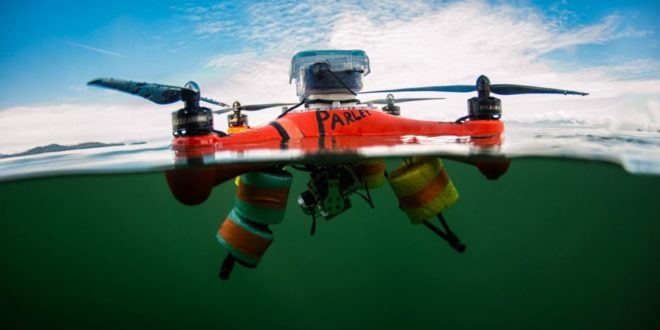If you follow how drones are being used in the world of conservation, you will have heard about Ocean Alliance by now. The Massachusetts-based marine conservation organization has pioneered a new way of collecting biological samples from whales in the form of SnotBot.
These adapted drones act as flying Petri dishes, hovering above whales as they come up to the surface to exhale.
The Ocean Alliance team is currently on an expedition in the Dominican Republic with conservation partner Parley, visiting the breeding and calving grounds of the North West Atlantic humpback whales.
Through email newsletters, Ocean Alliance CEO Iain Kerr has been documenting the group’s progress and providing insight into the ups and downs of a SnotBot expedition.
Here are the highlights (and the lowlights) so far…
On the road with new gear
As you can imagine, a scientific expedition involving multiple drones and data analysis requires plenty of luggage. Kerr explains:
“As with every Parley SnotBot expedition, this one started out with us at the airport with a ridiculous number of bags (total of 20 bags with 2 carry-ons each). We flew from Boston to Miami and Miami to Santo Domingo, where we picked up a rental mini van. We then drove for almost 3 hours to our accommodation in Samana. Six people and twenty bags was a bit of a squeeze in the mini van.”
EarBot, a waterproof drone designed to land on the surface and record whale song using underwater microphones.
There are so many bags because the team isn’t just collecting samples from the whales this time around.
“In addition to SnotBot, we are putting energy into another member of the Drones For Whale Research family: EarBot. EarBot was first seen in Alaska in 2016 and 2017… Our Robotics manager Chris Zadra has given EarBot some much needed TLC over the last few months and we are excited to be putting EarBot back to work to record humpback whale songs in the Dominican Republic.
We will also be doing photogrammetry work (measuring the size of whales with a drone) using our LIDAR array, mounted on one of our Inspire 2 drones.
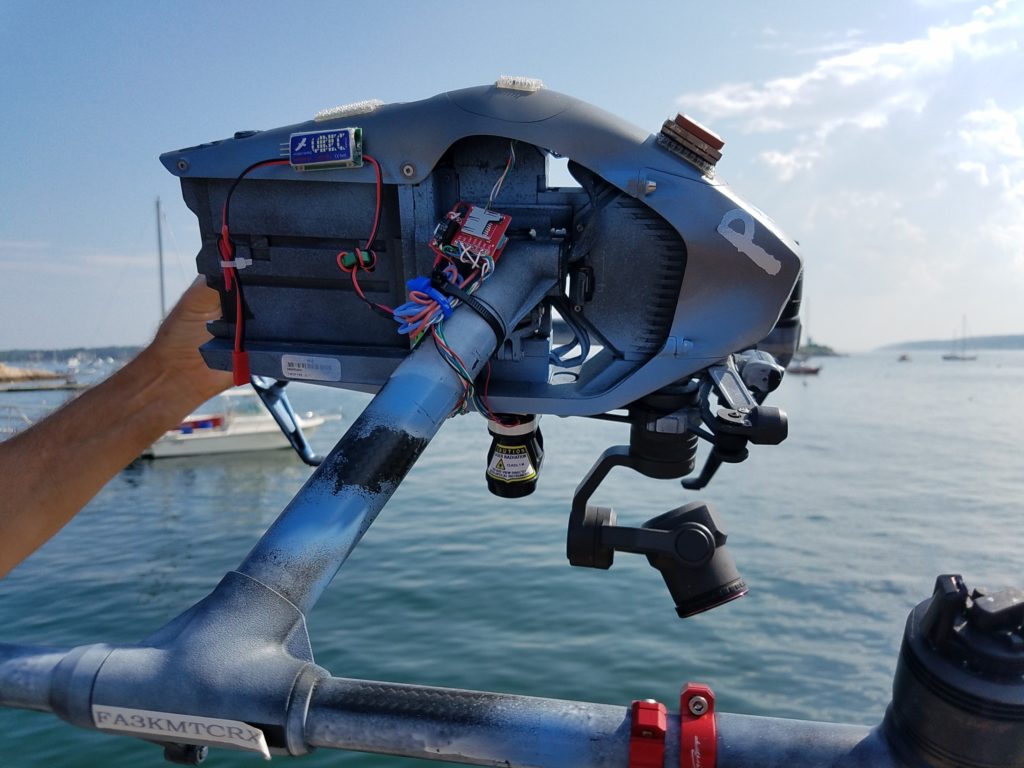
Ocean Alliance have adapted a DJI Inspire to use LIDAR to measure the size of whales.
Read more: Drones for Good: An Insider Look at North Carolina’s Response to Hurricane Florence
Four days in: No samples and one drone down
A few days later Kerr sent through another update. The expedition wasn’t going so well. It was far from plain sailing. Despite a solid ship, a great place to stay, a warm welcome from the locals and a guide confident there were plenty of whales in the area, the weather wasn’t so accommodating.
And then, to make matters worse, the team’s side adventure turned out going horribly wrong…
Two things can confound even the best planned expeditions, the weather and wildlife. If either one of them are against you your mission can be in big trouble.
Alas, the weather has been brutal, we don’t like to sit in our accommodation and look out the window and say it’s too rough, our policy is to always give it a go. For the last three days we have been on the water before sunrise but the weather has been brutal, we have had winds of 18 to 25 knots with the largest waves we have ever encountered in a small boat.
The mouth of Samana bay is open to the Atlantic so we have had 5 to 8 foot swells with breaking waves on top. After just a few hours on the water we have had to come in to port with no samples.

Retrieving a drone after a critical failure caused it to take a swim.
Disappointed that we could not see whales, yesterday afternoon Omar took us out to try and find some Manatees which was very exciting. The location was inside a reef I was flying a brand new Inspire 2 about 100 feet over the water 200 feet offshore and just 5 minutes into the flight my drone just dropped out of the sky into the water. This is the first critical failure we have had with a DJI Inspire drone and, of course. it landed in the water so it was ruined….
I can tell you that our spirits are down. Four days in and no samples and one drone down.
Christian and Chris did an excellent job retrieving the GPS position of where the drone went down and then Christian found the SnotBot in about 6 feet of water in a lot of Sea grass with his Phantom 4. Had Chris not painted the drone in a camouflage pattern I am sure it would have been lost in the sea grass, luckily the blue color was very visible. We do have drone insurance but it is never easy on the mind to lose a drone before you have even collected one biological sample or have seen a whale in your FPV viewfinder.
Good news!
After the expedition got off to a slow, wet and windy start, the next few days proved to be much more successful. Iain Kerr outlined how the team is now well on course to collect the number of samples they had aimed for, as well as getting a chance to test out EarBot.
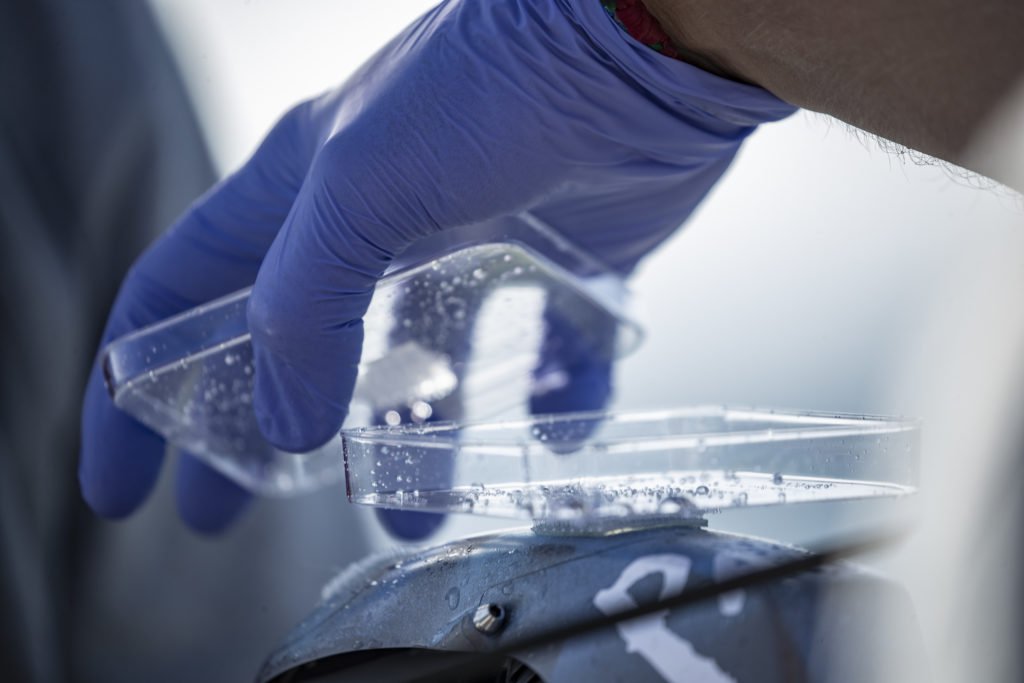
The Ocean Alliance team is working closely with Dr. Scott Baker’s lab at Oregon State to analyse DNA findings.
It gives me great pleasure to advise you that our last 3 days on the water have been fantastic, each day better than the previous. The weather has fallen into a typical trade wind scenario, calm in the early morning and picking up as the day goes on.
We were on the boat this morning by 6:15 and had the pleasure of watching a sunrise at sea (with a whale of course).Today we had our 1st sample by 7:15 am and had our 9th sample by 9:00 am, by 12:30 (when the winds picked up) we had collected a total of 14 samples bringing our expedition total to 54. Our goal was 50 samples, so we are now ahead of the game with 3 days to go.
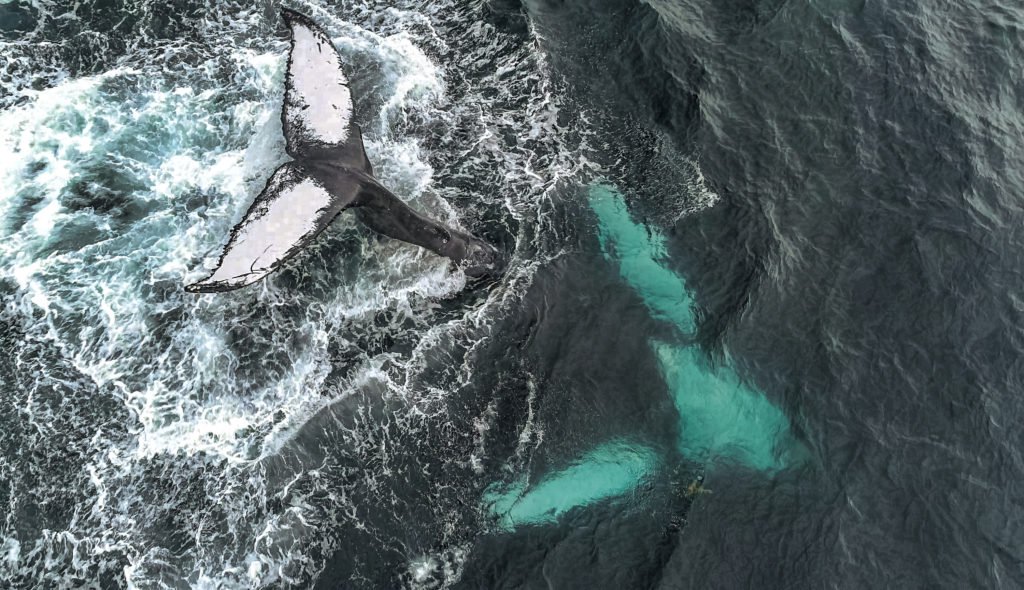
The weather clears up and the team gets to work.
As the sun rose we were with a mother, calf and escort, we collected two Snot samples from each whale so we could have comparable samples, then we collected another sample from each whale flying at a higher altitude than the first set so that we can try to determine what effect height might have on the success/productivity of the biological data (snot) that gets onto the dish.
Kerr also gives us some insight into the progress Ocean Alliance has been making with its data analysis. Previously the team has worked with Intel to identify whales using AI, so it’s no surprise that their methods are growing increasingly sophisticated…
Angie Sremba is here from Dr. Scott Bakers lab at Oregon State. Angie has been focusing on the DNA analysis. She brought us some exciting information with regards to how our biological data capabilities have (successfully) evolved over time.
It is important to remember here that part of this whole process is developing the collection tools and protocols while Dr. Bakers lab is developing the preservation and analysis protocols. In summary, in 2016 we had a 39% success rate with regards to sexing the animals from the DNA and a 55% success rate on the mitochondrial DNA. In 2018 we had a 92% success rate with regards to sexing the animals from the DNA and a 96% success rate with the mitochondrial DNA.
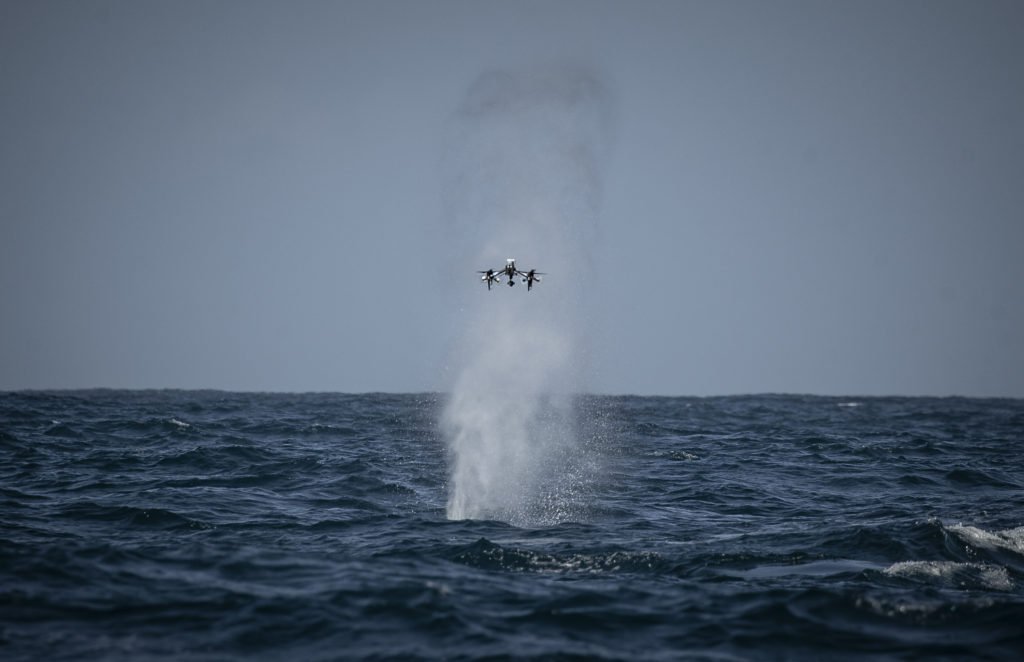
SnotBot getting snotted.
This is clearly exciting as it demonstrates that we are learning and getting better on all fronts.
We also did some sea trials with EarBot. After this expedition I will have four days at home and then Chris and I go to Cabo San Lucas with EarBot to work on a BBC special, so we need to make sure that EarBot is in tip top shape.
If you’d like to find out more about the work of Ocean Alliance you can visit www.whale.org. The images included in this article were captured by Christian Miller.
Malek Murison is a freelance writer and editor with a passion for tech trends and innovation. He handles product reviews, major releases and keeps an eye on the enthusiast market for DroneLife.
Email Malek
Twitter:@malekmurison
Subscribe to DroneLife here.
https://dronelife.com/2019/03/08/drones-ocean-alliance-parley-snotbot-expedition/
 Unmanned Aerial Vehicle The latest drone news
Unmanned Aerial Vehicle The latest drone news
